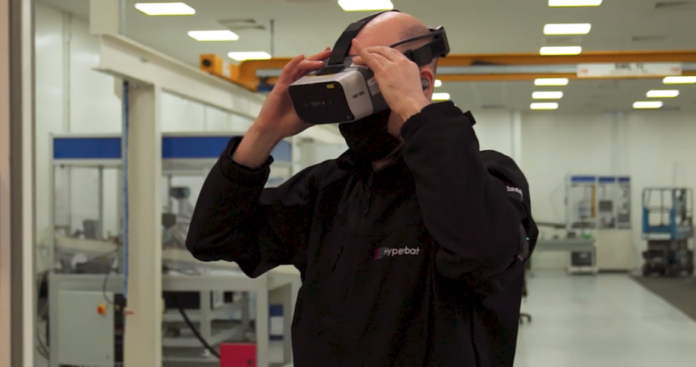
Shakespearian environment for world’s first 5G VR meeting
Hyperbat a technology creator based in Shakespeare Country has answered the bard’s paean for ‘journeys end’ – by creating a virtual workshop where engineers meet in cyberspace. It saves these efficiency lovers a fortune in time and money by cutting the 70-mile commute between their offices. The battery maker, a joint venture between Williams Advanced Engineering and Unipart Manufacturing Group to make better batteries, created the Virtual Workspace in partnership with a cast of IT luminaries.
Meet in cyberspace
BT, Ericsson, the GRID Factory, Masters of Pie, Qualcomm and Nvidia all helped to prove the virtual reality (VR) theory that engineers can meet in the metaverse. The project used edge computing and the world’s first 5G-enabled VR technology meeting to bring engineers from Wantage and Coventry together in cyberspace. According to Nvidia, the engineers work simultaneously on a 1:1-scale digital twin of an EV battery. Graphical Renders, powered by chip maker Nvidia’s graphics processors, RTX Virtual Workstation software and NVIDIA CloudXR technology, allow the engineers to immerse themselves in virtual tasks that recreate their real life challenge. Using a digital twin with VR actually clarifies the vehicle battery design process, they say. This has reduced errors, saved time and presumably cut-down on speeding fines and parking tickets.
Virtual workshop
“This is the future of manufacturing,” said Marc Overton, managing director of Division X, part of BT’s Enterprise business. “It shows how a 5G private network can provide the foundation for a whole host of new technologies.” There is a significant role played by Masters of Pie’s collaboration engine, Radical, which creates a real-time extended reality (XR) experience that allows design and manufacturing teams to freely interact with a 3D, life-size model of an electric vehicle battery. This gives the Hyperbat team a single source of truth for each project, obviating the need for multiple iterations.
No data delay
The 5G-enabled VR headset is powered by the Qualcomm Snapdragon XR2 platform, which is launched with one click and doesn’t need to import and export any data. Designers can put on their headsets and get straight to work, according to Hyperbat. There are huge amounts of data involved, but it’s rapidly processed on remote computers before being streamed to VR headsets with ultra-low latency, said Hyperbat. This complex task has been simplified by Project Aurora, NVIDIA’s CloudXR and RTX Virtual Workstation software platform for XR streaming at the edge of the 5G network.
How 5G works
The potential for 5G’s ultra-low latency is realised with an Ericsson radio and private 5G network, which, Hyperbat said, gives it faster speeds, reliable connections and instant responses. “Hyperbat’s use case shows how 5G and digitisation can help boost the UK’s economy and industry,” said Katherine Ainley, CEO of Ericsson UK and Ireland.


